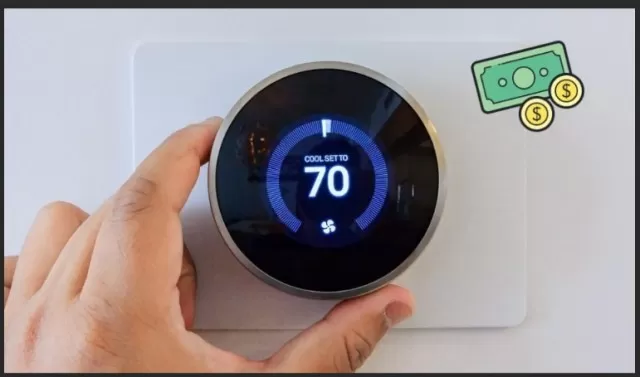Debunking Energy-Saving Myths: Facts to Know. In a world inundated with energy-saving tips and tricks, it’s essential to exercise a degree of discernment. While many well-intentioned suggestions aim to reduce energy consumption, not all may be as effective or applicable as they claim.
As you navigate this landscape of efficiency claims, consider these insights to make informed decisions about implementing energy-saving measures. Ultimately, the key lies in a balanced and informed approach to energy-saving practices. While some tips may indeed deliver substantial benefits, others might have limited impact or prove impractical for your situation. By staying informed, considering the broader implications, and making deliberate choices, you can navigate the realm of energy conservation with confidence, making meaningful strides toward a more sustainable and efficient lifestyle.
Embrace Healthy Doubt: Debunking Outdated Energy-Saving Myths and Embracing Effective Modern Solutions

In an era where technology continues to evolve at a rapid pace, it’s imperative to approach energy-saving advice with a critical eye.
The landscape of energy efficiency has transformed significantly over the years, rendering some once-valid tips obsolete and even misleading. The days of relying on outdated suggestions to trim your energy expenses are long gone, and the time has come to usher in a new era of pragmatic, empirically-tested strategies.
Unearth the Truth: Shattering 10 Persistent Energy-Savings Misconceptions.
As the digital realm becomes saturated with well-intentioned yet outdated energy-saving advice, it’s crucial to sift through the noise and embrace a fresh perspective on cutting down your energy costs.
Let’s delve into the depths of these tenacious energy-saving myths that have overstayed their welcome and unveil a collection of up-to-date, real-world tactics that genuinely make a difference. Join us in dispelling these misconceptions and embracing the true path towards efficient energy utilization.
Debunking Myth 1: The Illusion of Savings – Why Closing Vents in Empty Rooms Doesn\’t Add Up
It’s not uncommon to have fallen for the allure of this seemingly logical energy-saving hack.
The concept appears straightforward: by closing vents in vacant rooms, you’re channeling temperature-controlled air exclusively to the spaces where it’s most needed. However, before you act on this notion, let’s delve deeper into the mechanics of your home’s heating, ventilation, and air conditioning (HVAC) system.
The Hidden Pitfalls: Unveiling the Unforeseen Consequences.
Picture this: you meticulously close the vents in your guest bedroom, believing you’re making a responsible move towards energy conservation.
But beneath the surface, a different story unfolds. The closed vents disrupt the delicate equilibrium of air pressure within your HVAC ducts, setting in motion a chain of events that ultimately counteracts your intended savings.
Pressure Buildup: The Silent Saboteur.
HVAC systems are engineered to distribute air evenly throughout your home.
By sealing off certain vents, you’re creating an obstruction that disrupts the system’s intended airflow dynamics. As a result, air pressure begins to build up within the ducts, leading to potential air leaks and inefficiencies.
This buildup not only places undue strain on your HVAC equipment but also exacerbates energy wastage—a far cry from the desired cost savings.
Leakage Woes: Escaping Energy Efficiency.
The increased air pressure caused by closed vents can trigger leaks in the ductwork.
These leaks, often unnoticed, allow precious heated or cooled air to escape into unoccupied spaces, effectively rendering your efforts to Save Energy futile. Moreover, the escaping air may find its way into areas like your attic or basement, where its temperature regulation is unnecessary and wasteful.
A Balanced Approach: Navigating the Energy-Saving Terrain.
Before you succumb to the temptation of closing vents in empty rooms, consider alternative strategies that promote genuine energy efficiency.
Maintaining a well-balanced and unrestricted airflow within your HVAC system is key to optimizing its performance. If you’re seeking temperature control in specific rooms, explore smart thermostat solutions that allow you to adjust settings according to occupancy, ensuring a harmonious blend of comfort and savings.
In the quest for energy conservation, it’s vital to decipher fact from fiction and make informed decisions that align with the latest insights in home efficiency.
The myth of closing vents as an energy-saving tactic has been unveiled, urging us to embrace a more holistic and enlightened approach to reducing our energy bills.
Dispelling Myth 2: Dishwashing Dilemmas Demystified – Debunking the Hand-Washing vs. Dishwasher Debate

In the ever-evolving landscape of household efficiency, the timeless hand-washing versus dishwasher dilemma has undergone a transformative shift.
Once rooted in truth, the notion that hand-washing reigned supreme in conserving energy has been challenged by the advent of modern Energy Star-certified dishwashers. Let’s unravel this myth and explore the updated dynamics of dishwashing in today’s energy-conscious world.
Evolution of Efficiency: A New Dawn for Dishwashers.
Gone are the days when hand-washing unequivocally held the energy-saving crown.
Today’s dishwashers, meticulously designed with energy efficiency in mind, have revolutionized the game. These innovative appliances flaunt Energy Star certifications and boast an array of energy-conscious wash settings that curtail consumption without compromising cleaning prowess.
Redefining Consumption: The Hand-Washing Paradox.
Contrary to its former reputation, hand-washing dishes has undergone a reevaluation.
In many instances, washing dishes by hand can unwittingly guzzle more hot water compared to a well-calibrated, eco-friendly dishwasher cycle. The latter, equipped with precision-engineered water and energy management systems, optimizes resource usage to achieve cleanliness without excess waste.
Empty or Efficient: The Art of Load Optimization.
While embracing the power of modern dishwashers, it’s crucial to tread thoughtfully when considering their usage.
Loading the appliance with a near-empty collection of dishes remains a misuse of its capabilities, echoing wastefulness regardless of its eco-friendly credentials. Instead, practice prudent load management, capitalizing on the machine’s capacity to effectively cleanse multiple items in a single cycle.
A Symphony of Sustainability: Navigating the Dishwashing Landscape.
In a world driven by sustainable aspirations, the debate between hand-washing and dishwasher utilization has pivoted toward the latter.
As technology ushers in a new era of energy efficiency, embracing your Energy Star-certified dishwasher’s capabilities stands as a responsible choice. However, exercise discretion by optimizing loads and avoiding unnecessary cycles to harness the true potential of this modern marvel.
The saga of dishwashing efficiency has taken an intriguing twist, challenging traditional assumptions and inviting us to embrace a harmonious blend of innovation and conscientiousness.
As you navigate the dishwashing landscape, remember that informed decisions and judicious practices are pivotal in your quest for energy conservation.
Busting Myth 3: The Phantom Menace of Energy Drain – Unmasking the Truth Behind \”Off\” Appliances
In the intricate tapestry of energy consumption, a prevalent misconception has cast a shadow over our understanding: the belief that an appliance, once powered off, retreats into a state of dormancy, ceasing all energy usage.
Yet, hidden beneath this façade of inactivity lies a spectral force known as “vampire power,” silently siphoning energy even in moments of apparent quiescence. Let’s unravel the enigma of this myth and shed light on how to thwart its insidious influence.
Unmasking the Phantom: Vampire Power’s Stealthy Incursion.
Behold your seemingly dormant electronic companions, ensconced in their “off” state.
While their screens remain dark and their buttons unpressed, an intricate web of circuitry awaits its next command. In this subtle interlude, phantom currents traverse through the circuitry, allowing the device to respond instantaneously to remote controls, timers, or updates, all at the cost of a steady but often unnoticed energy drain.
The Dance of Prudent Disconnection: Unplugging for True Savings.
To vanquish the phantom menace and staunch the flow of vampire power, a proactive stance is required.
When an electronic sentinel is not in frequent service, mustering the courage to unplug it from the power source becomes an essential ritual. This simple act of disconnection not only thwarts the energy vampires but also bestows upon you the satisfaction of tangible energy savings.
Vacation’s Hidden Power Play: A Call to Action.
As you embark on a sojourn of leisure, don’t let your guard down in the realm of energy conservation.
The same devices that serve you diligently during your daily routines possess the potential to betray your efforts while you’re away. Before embarking on your journey, initiate a sweeping disconnection, ensuring that each outlet stands void of the lurking vampire power.
A Charger’s Unseen Grip: Empowerment through Unplugging.
In the symphony of energy-conscious practices, even the unassuming charger occupies a significant role.
While devoid of an active device, it remains tethered to the grid, perpetuating the phantom current dance. Liberating your outlets from these seemingly innocuous tendrils of power completes the cycle of conscientious disconnection.
A Harmonious Cadence: Energizing the Path to Efficiency.
In the age of unceasing connectivity, mastering the art of defeating vampire power emerges as a vital chapter in the saga of energy conservation.
By dispelling the myth that “off” signifies an end to energy consumption, you ascend to a higher plane of awareness. Armed with the wisdom of unplugging and the courage to break the cycle of phantom power, you redefine your relationship with energy usage, forging a path toward a future of genuine efficiency.
Unraveling Myth 4: The Calculated Realities of Smart Thermostats – Debunking the Notion of Automatic Savings

In the grand narrative of home energy management, a technological marvel has emerged—the smart thermostat.
Promising potential savings and embodying a vision of effortless efficiency, these devices have captured the imagination of homeowners seeking to reign in their utility bills. Yet, as with any innovation, reality can sometimes diverge from expectation.
Let us embark on a journey through the realm of smart thermostats, unveiling the nuanced truths that underlie the promise of automatic savings.
Savings Mirage: Navigating the Promise and Reality.
The allure of smart thermostats lies in their ability to autonomously optimize temperature settings, ostensibly curbing energy consumption and leading to financial relief.
However, the dream of sweeping, instantaneous savings can encounter a sobering reality check. For those already well-versed in the realm of programmable thermostats, the incremental gains offered by their intelligent counterparts may not be as dramatic as anticipated.
Efficiency’s Art of Balance: The Role of User Engagement.
In the tapestry of energy savings, the proactive role of the user remains pivotal.
An intelligent thermostat, while armed with advanced algorithms and data-driven decision-making, is not immune to human influence. If left to its own devices without user guidance or engagement, its potential for savings remains underutilized.
It is a partnership—a dance between technological finesse and user conscientiousness—that truly unlocks the promised benefits.
Personalization and Adaptation: Nurturing the Savings Potential.
To reap the full rewards of a smart thermostat’s capabilities, a multi-faceted approach is key.
Begin with an evaluation of your current energy management practices. If a programmable thermostat is already a stalwart in your home, consider whether the leap to a smart variant truly aligns with your unique needs and circumstances.
Embrace the role of an active participant, harnessing the power of customization and Personalization offered by these devices.
Explore their features, learn their intricacies, and adapt them to your daily routines. Through diligent calibration and intentional interaction, you can unveil a realm of savings that harmonizes with your lifestyle.
A Balanced Narrative: The Intersection of Promise and Prudence.
In the saga of smart thermostats, the narrative is not one of unadulterated savings, but rather a nuanced dance between technology and conscious decision-making.
As you embark on the journey to integrate these intelligent devices into your home, approach with tempered expectations and a willingness to embrace their potential in synergy with your efforts.
The myth of blanket savings gives way to a narrative that values partnership—a collaborative effort where smart technology meets human awareness.
By weaving together these threads, you ascend beyond the confines of misconception, painting a portrait of energy-conscious living that resonates with both innovation and prudence.
*The information is for reference only.